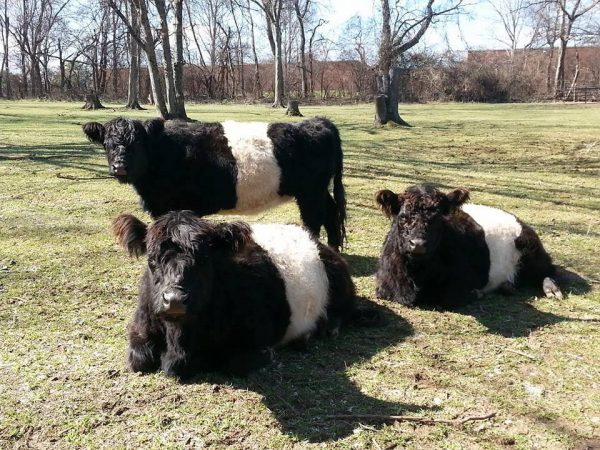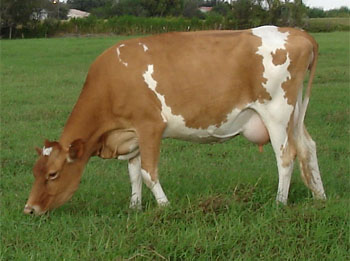Belted Galloway x Angus Crosses

Belted Galloway beef, like that from Galloways and other Scottish breeds, is of high quality and can be marketed in a variety of specialty niches, including grass-fed and organic beef. The long body conformation increases the production of high-priced cuts of beef. Hides may be used to make rugs, and the belting pattern combined with the shaggy hair makes these products distinctive and attractive.
Belted Galloways were imported to North America beginning in the 1940s, and the Belted Galloway Society in the United States was founded in 1951. The breed was increasing in numbers in North America and globally, but in recent years registrations of purebreds have fallen. In Europe, the breed is considered a “light grazer,” meaning that its relatively light bodyweight makes it preferred for grazing where heavier animals would damage marginal lands. Belted Galloways are also known for their browsing ability, giving them added value in the management and diversification of grasslands.
https://livestockconservancy.org/heritage-breeds/heritage-breeds-list/belted-galloway-cattle/
Guernsey Dairy Cattle

Guernseys have had a prominent place in American agriculture, but the breed has fallen into decline in recent decades. With the dairy industry focused exclusively on the quantity of milk produced under confinement conditions, and pricing favoring the quantity of fluid milk over the quality of the components, such as protein and butterfat, the Guernsey’s strengths lost market value. Between 1970 and 1990, annual registrations of purebred calves dropped by 60%. Some breeders have sought to stop this decline by increasing milk production, often through the introduction of Red Holstein. This strategy hasn’t been successful at increasing production enough to make the Guernsey competitive with the Holstein, and instead, it has caused the breed to lose some of its genetic distinctiveness.
https://livestockconservancy.org/heritage-breeds/heritage-breeds-list/guernsey-cattle/